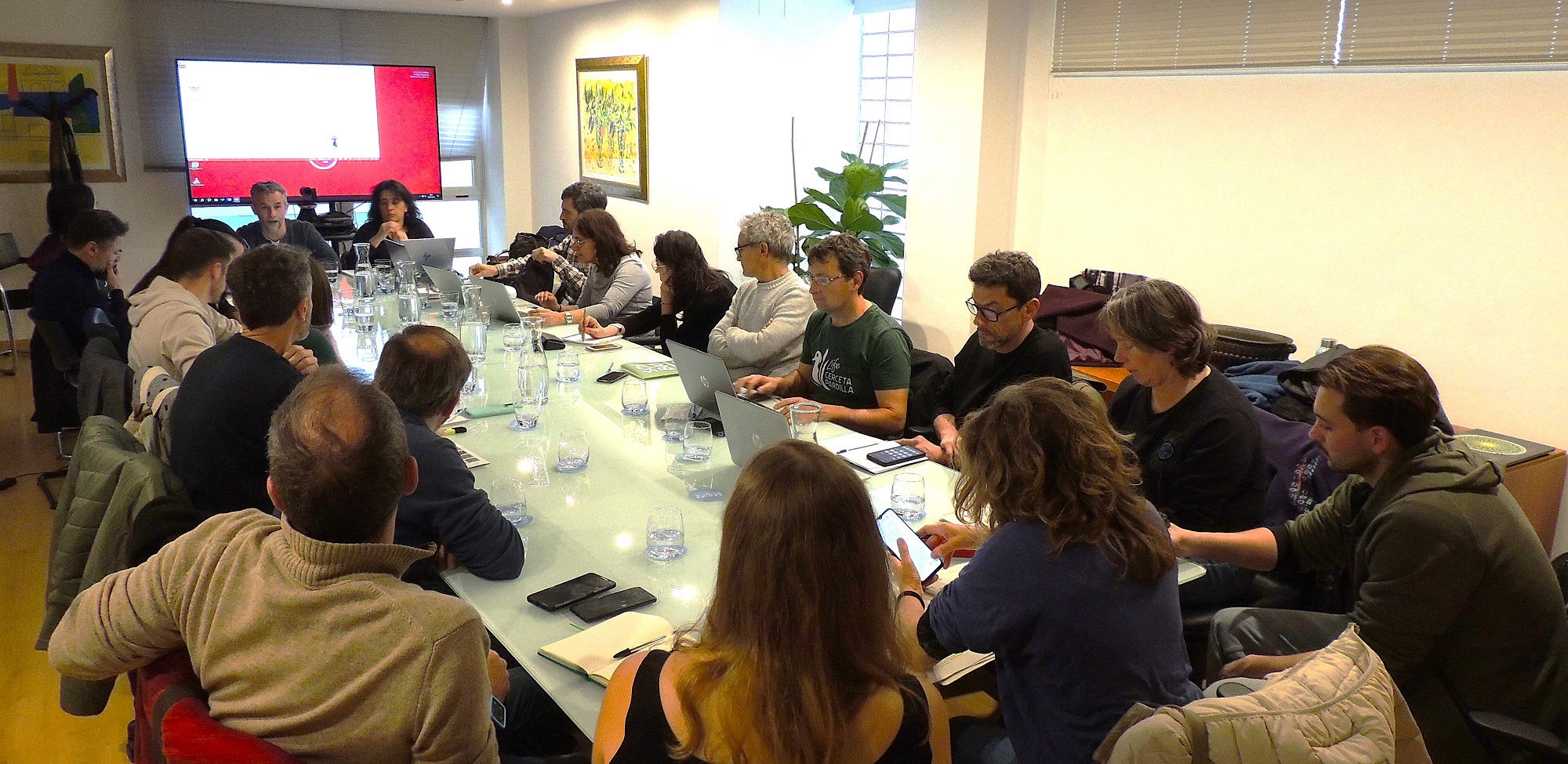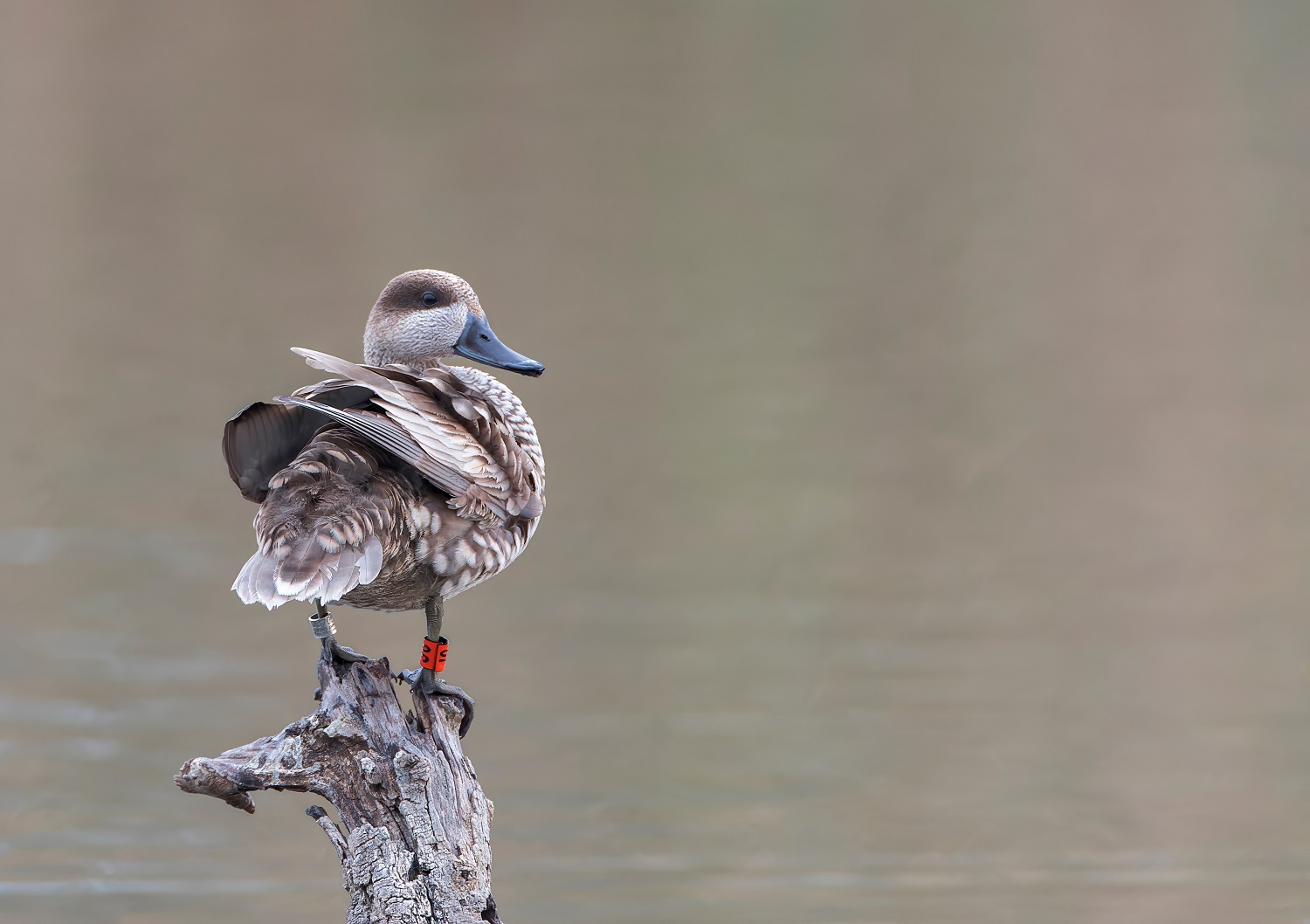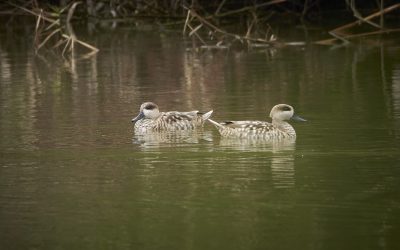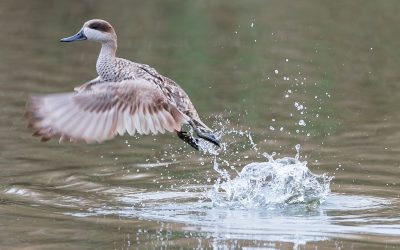The LIFE Cerceta Pardilla faces its last year of implementation in 2025 with the aim of continuing to achieve the results expected in the project and consolidate the progress made to date for the conservation of the species and its habitat, the wetlands. To this end, the 8th management committee of the project was held with the attendance of all the partners. The meeting took place at the headquarters of the Regional Ministry of the Environment, Universities, Research and Mar Menor of the Government of the Region of Murcia.
Since 2021, the project has developed a programme of actions in Andalusia, the Valencian Community and the Region of Murcia, focusing on habitat conservation, research, governance and awareness-raising.
The main goals for this year include the completion of the restoration and habitat improvement works in the wetlands included in the project, among them the La Raja estate, located in the El Hondo Natural Park, in Alicante, and the Brazo del Este Natural Park, in Seville. Both wetlands are enclaves of critical importance for the survival of the marbled teal.
In this area of habitat conservation, the aim is to achieve a total of 3,000 hectares of wetland actions. To this end, new land stewardship actions will be carried out so that 15 agreements will have been signed by the end of the project.
The breeding centre project will also be completed at the Zoobotánico de Jerez de la Frontera (Cádiz), managed by the Junta de Andalucía, which will be added to the existing one managed by the Generalitat Valenciana at the Granja de El Saler. Both centres are essential to reinforce the wild population of the species through captive breeding and to achieve the objective of reaching a minimum of 125 breeding pairs in our country by the end of 2025.

Likewise, in the coming months the habitat management manual for the marbled teal will be updated with data obtained from the individuals radiolabelled within the framework of the project and the monitoring of the species in North Africa will continue, in collaboration with scientific bodies in Morocco, Algeria and Tunisia.
In terms of awareness-raising, educational and dissemination activities will continue, including workshops aimed at key sectors, educational centres and ornithological tourism companies. And the remaining workshops will be held with stakeholders involved in the conservation of the marbled teal.
At the international level, a workshop is planned to exchange experiences with other projects and a final technical workshop in Sicily, Italy, in collaboration with the LIFE Marbled duck PSSO. This project carries out habitat improvement actions for the recovery of the marbled teal in the wetland complex of southeastern Sicily, one of the most important remaining in southern Europe.
PROJECT PROGRESS TO DATE
Among the main achievements to date, the project has purchased 141 hectares of wetlands in the El Hondo Natural Park, an essential area for the survival of the species, where habitat improvement actions are being carried out.
At the same time, the captive breeding programme has enabled the release of 3,042 individuals, 95 of which have been equipped with devices for satellite tracking and to improve knowledge of their movements and threats. In addition, more than 100 nest boxes have been installed to encourage in situ reproduction.
In order to involve society in the conservation of the marbled teal, a land stewardship programme has been set up, with which, to date, eleven agreements have been signed with private landowners and users. Thanks to these agreements, different actions aimed at the conservation of the species are being carried out in more than 2,300 hectares of key wetlands in different regions. Likewise, 88 activities have been carried out in schools out of the 100 days planned, 45 days out of the 55 volunteer days planned, and the travelling exhibition has already been on display in 29 places where it has been visited by more than 100,000 people.
The field of research has been another key pillar of the project. In collaboration with the Doñana Biological Station of the CSIC, the genetic variability and structure of the captive and wild populations of marbled teal has been evaluated to guide future conservation actions.
In addition, it has participated in the updating of the Conservation Strategy for the species in Spain, approved in July 2024 and available on the MITECO website. Progress has also been made in the knowledge of the ecology of the species by means of a conventional tagging programme and another via satellite to monitor its movements and threats.
THE LIFE CERCETA PARDILLA PROJECT
LIFE Cerceta Pardilla aims to improve the conservation status of 3,000 hectares of wetlands to reverse the risk of extinction of Europe’s most endangered duck, which is in a critical situation in Spain. To this end, it has undertaken a series of actions to reinforce the state of its populations in the natural environment, improve the state of the wetlands and scientific knowledge of the species.
The project, which is coordinated by the Biodiversity Foundation of the Ministry for Ecological Transition and the Demographic Challenge, involves as partners the Ministry itself, through the Segura Hydrographic Confederation and Tragsatec; the Regional Government of Andalusia, through the Department of Sustainability and Environment, and the Environment and Water Agency M.P.; the Regional Government of Valencia; the Government of the Region of Murcia, as well as the organisations SEO/BirdLife and ANSE. It is supported by the LIFE Programme of the European Union and the Directorate General for Water.




